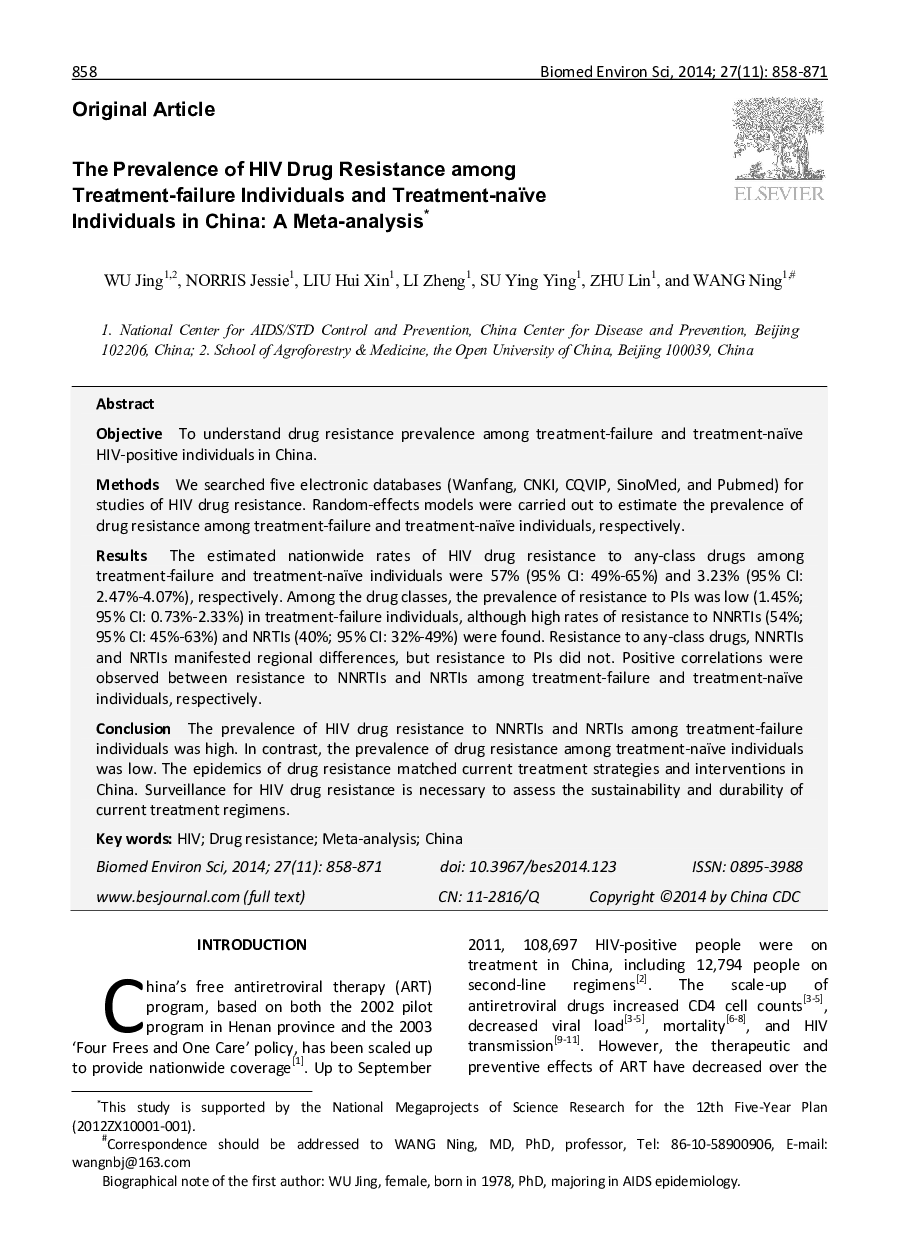| Article ID | Journal | Published Year | Pages | File Type |
|---|---|---|---|---|
| 4195965 | Biomedical and Environmental Sciences | 2014 | 14 Pages |
ObjectiveTo understand drug resistance prevalence among treatment-failure and treatment-naïve HIV-positive individuals in China.MethodsWe searched five electronic databases (Wanfang, CNKI, CQVIP, SinoMed, and Pubmed) for studies of HIV drug resistance. Random-effects models were carried out to estimate the prevalence of drug resistance among treatment-failure and treatment-naïve individuals, respectively.ResultsThe estimated nationwide rates of HIV drug resistance to any-class drugs among treatment-failure and treatment-naïve individuals were 57% (95% CI: 49%-65%) and 3.23% (95% CI: 2.47%-4.07%), respectively. Among the drug classes, the prevalence of resistance to PIs was low (1.45%; 95% CI: 0.73%-2.33%) in treatment-failure individuals, although high rates of resistance to NNRTIs (54%; 95% CI: 45%-63%) and NRTIs (40%; 95% CI: 32%-49%) were found. Resistance to any-class drugs, NNRTIs and NRTIs manifested regional differences, but resistance to PIs did not. Positive correlations were observed between resistance to NNRTIs and NRTIs among treatment-failure and treatment-naïve individuals, respectively.ConclusionThe prevalence of HIV drug resistance to NNRTIs and NRTIs among treatment-failure individuals was high. In contrast, the prevalence of drug resistance among treatment-naïve individuals was low. The epidemics of drug resistance matched current treatment strategies and interventions in China. Surveillance for HIV drug resistance is necessary to assess the sustainability and durability of current treatment regimens.
